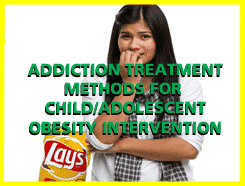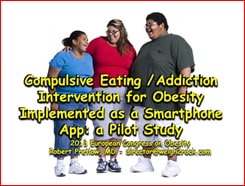A Halloween Retrospective

The trick-or-treat ritual boils down to three elements: First, prepare a costume in which to collect candy. Next, collect candy. Finally, decide what to do with the candy. Send it to our troops overseas? Donate it to dentists who offer something useful or philanthropic in return? Take it downtown and give it to the first person whose worldly goods are in a shopping cart?
Most likely, kids are going to opt for eating all of it. Otherwise, why did they go to the trouble? Often, the only choice parents have — if any — is to decree that their offspring should ration the goodies over a period of days. Good luck with that, by the way.
Through the years, Childhood Obesity News had offered numerous suggestions to help bring some sanity into the proceedings. “The Most Fun with the Least Sugar” is our motto, or would have been if we had thought of it sooner.
But seriously, this blog has touched upon many topics with the potential to bring on more smiles while minimizing the tummy aches, not to mention the calories. The holiday is a danger zone for kids who are in good shape. For those who are conscious of being overweight or obese, or at risk, it can be an ordeal.
Something else to focus on
Not surprisingly, a lot of anti-Halloween sentiment centers around the health aspect. The whole point and purpose of these suggestions for fun is to turn the spotlight away from the sugar treats and shift the emphasis to creativity and participation. Figuring this out could be an opportunity for family togetherness so memorable that even sweets are forgotten. At least temporarily.
For instance, if you plan to distribute trick-or-treat goodies from the front porch, there are very good reasons to switch over to non-food items. Of course, your kids will be expert consultants on this decision. Go out and get some exercise walking around in a store, or shop online for inexpensive but desirable objects to distribute. Pencils with miniature jack-o-lanterns on top, or even some non-Halloween-related gadgets that can be bought in bulk.
Parents, this is a secret worth remembering. What your kids really want is your attention, and generally the younger they are, the more true this is. Entertaining activities can go a long way toward persuading little ones to do what you want, which is to forget about candy for a while. Make up a game that could become a treasured tradition. Incidentally, check out this little tale depicting what could so easily become a normal way of doing things.
Is there an infant in the house?
An ever-popular Halloween sub-category is costumes for babies. A very young minor child is granted no say in the matter, and might turn up disguised as a taco, a banana, a chili pepper, a hamburger, a slice of pizza, a lobster, a hot dog, a roast turkey, a packet of ketchup, a candy bar, or a gingerbread man. (That last choice is economical, as it can be recycled for Christmas.)
In a dystopian vision, it is possible that some far-sighted disreputable second cousin might smell future profit and encourage the silliest costumes and snap plenty of photos, with an eye toward growing a nice passive income stream by blackmailing those former babies when they reach an embarrassment-prone age.
Just kidding. But seriously, this might be the year to adopt a new paradigm. Take a look at one or all of the previous posts on this topic. Try substituting attention for treats, and encourage activity rather than consumption. If the results are not what you hoped for, we have the whole year to construct and refine a plan for next year. Refuse to accept discouragement, and remember, because individuals and families vary greatly, nothing works for everybody. It is equally certain that nothing works if we don’t try it.
Your responses and feedback are welcome!
Image by Theo Crazzolara/Attribution 2.0 Generic










 FAQs and Media Requests:
FAQs and Media Requests: 











